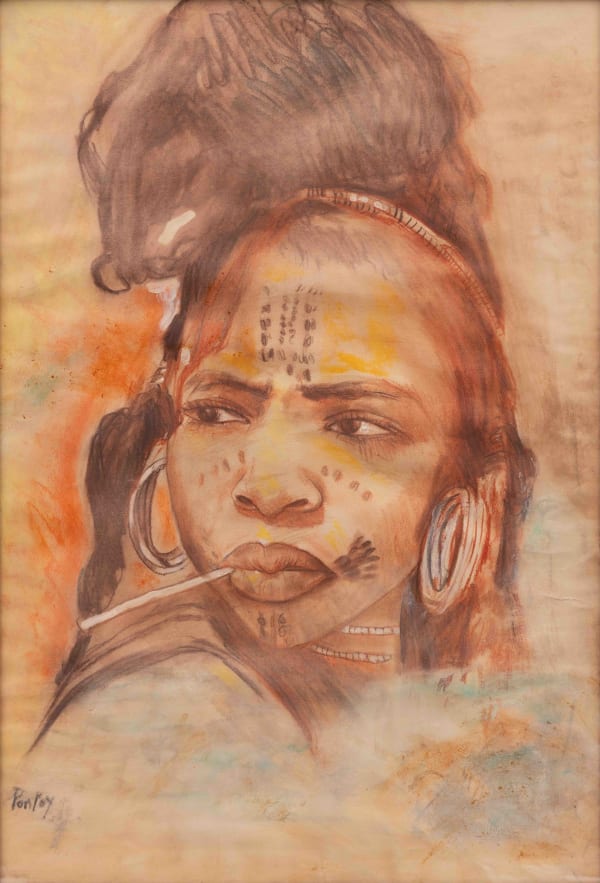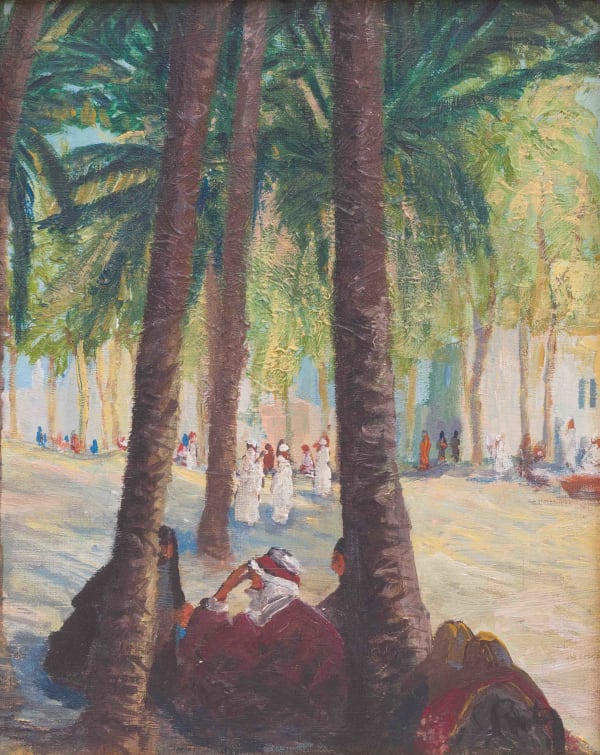Jean Pontoy Français, 1888-1968
French Orientalist Painter
Henri Pontoy was born in Reims in 1888. Drawn to the arts from an early age, he studied at the École des Beaux-Arts in Paris, where he trained in engraving under Luc-Olivier Merson. He began his career exhibiting prints at the Salon des Artistes Français, before turning fully to painting.
His work, marked by a keen sensitivity to light and atmosphere, aligns with the tradition of Orientalist painters. Influenced by both the Barbizon School and Post-Impressionism, Pontoy developed a distinctive style, combining precise draughtsmanship with a vibrant color palette. In 1926, a grant from the Société coloniale des artistes français took him to North Africa — and it was in Morocco that he chose to settle permanently.
From the 1930s, he lived near Ouarzazate before becoming a professor of arts and literature at the Moulay Idriss high school in Fez, where he taught for over fifteen years. He travelled widely across the country, capturing lively souks, medinas, rural life, and sun-drenched landscapes. A close friend of Jacques Majorelle, he joined him on a journey through Guinea in 1947, further enriching his artistic outlook.
Widely recognized and awarded — including the Grand Prize of the City of Algiers in 1933 and the Cameroon Prize in 1951 — Henri Pontoy is considered one of the last great figures of French Orientalist painting. He left Morocco for good in 1965 and passed away three years later in Six-Fours-les-Plages, leaving behind a luminous body of work deeply rooted in the landscapes and cultures of the Maghreb.




